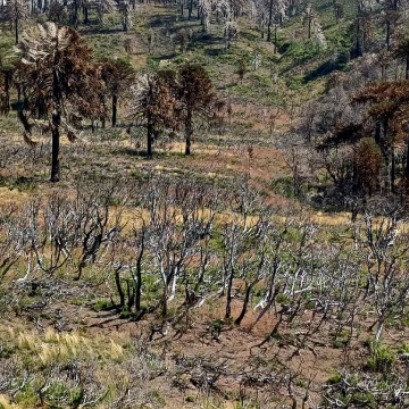
Germany | The forest industry guides Ligna 2025 visitors for new paths towards greater efficiency of resources
Wood supply as raw material is essential for the world carpentry industry and wood processing, which will meet in Ligna 2025 in Hannover from May 26 to 30. As a reflection of this, the Forest Section of the world leading fair will show all aspects of the optimized methods for the use of wood. Modern -scale modern forest machinery, mobile sawmills, smart logistics and safe transport - such as technical pioneers in the use of wood as material and energy - will be the protagonists, together with the crucial efforts to preserve forests as a sustainable source of raw materials for future generations and prepare them for the challenges of the future.
As a platform for the digitalization of process chains in the forest and timber industry, Ligna 2025 also opens access to new growing markets. The focus is in the different types of forest damage in recent years have left large areas that now need to be replanted, says Stephanie Wagner, Ligna Director at Deutsche Messe.In Ligna, the exhibitors will show how to develop how to develop. Better adapted to local conditions and climate change, and how to ensure the future supply of renewable wood and environmentally respectful for the industry, with forest managers that operate in a sustainable way using more and more wood as an efficient raw material in the use of resources. People are the center of all these efforts. This includes guaranteeing optimal working conditions and, above all, safe, as well as honoring the special relationship that people have shared with forests for centuries, adds Wagner. Pabellones 33 and 35, a central point in lignatracially, Pavilions 33 and 35, in the outer zone under the cover of the expo Forestal.In Pavilion 33, among the exhibitors are the Forest Training Center of the State Forests of Baja Saxony (NFBZ), the Association of Forest Contractors AFL Niedersachsen EV, the German Association of Forest Contractors (DFUV), Social Security for Agriculture, Silviculture and Horticulture (SVLFG), the Center for Competition 3N for renewable resources Bioeconomy (3N EV), the German Forestry Council, the Association of Forest Owners of Low Saxony, PEFC (the largest independent certification system in the world for sustainable forestry) and the state forests of Low Saxony (NLF). As host in Pavilion 35, Wald Und Holz NRW presents a wide range of topics, with participants such as the start Techtinyhouse of Detmold, the University of Applied Sciences of Aquistgrán and the Center for Wood Construction of Aquison, the University of Applied Sciences of Ostwestfalen-Lippe (TH OWL) and the University of Siegen. This year, Pavilion 33, the forest pavilion, is dedicated to the subject people-technology-raw materials. We want to make it clear that the needs of people, which may be very well aligned with nature, are the first, says Dr. Maurice Strunk, Federal Director of the German Association of Forest Contractors (DFUV) and general director of AFL Niedersachsen. Our forests will inevitably change to climate change. Through active forest management, we can positively support these processes and create real added value for society. At the same time, it is crucial to make forest work safer, since dozens of people still lose their lives every year. The use of technology is necessary and sensible: it helps to minimize risks on the one hand and allows us to face the enormous challenge of reforesting large areas on the other, explains Strunk.The forest scientist and his colleagues are committed to ensuring that future generations can trust a raw material produced in a sustainable, ecologically valuable and respectful of climate. We will mark the course in the coming years. The title People - Technology - Raw Materials of the forest pavilion reflects all these challenges, Stunk concludes.
IT MAY INTEREST YOU
 Experts cant believe it, but this tree is the oldest in the world and continues to bear fruit: it is 4,000 years old.
Experts cant believe it, but this tree is the oldest in the world and continues to bear fruit: it is 4,000 years old.
Nature keeps secrets that defy the passage of time, and one of the most surprising examples is a tree that, approximately 4,000 years old, continues to bear fruit today. This specimen has become a symbol of resistance and longevity, capable of surviving climate changes, landscape transformations and human activity itself.
 Specialists from 10 provinces develop forest landscape restoration strategies throughout the country
Specialists from 10 provinces develop forest landscape restoration strategies throughout the country
The program is developed by researchers from INTA, Conicet and the Argentine Wildlife Foundation.
 They promote research in pine resins from the NEA
They promote research in pine resins from the NEA
The forestry industry is one of the most important sectors in the economies of Misiones and Corrientes. Thousands of hectares of pine supply the paper, pulp, boards and sawmill industry. Pinus elliottii, one of the species established in the region, in addition to providing wood, is used to produce resin, a non-wood forest product with high demand in the chemical, pharmaceutical and cosmetic industries. In 2\024, resin extraction of approximately 52,6\0\0 tons was achieved from approximately 18,\0\0\0,\0\0\0 trees in production, generating income and jobs with high expansion potential.





















